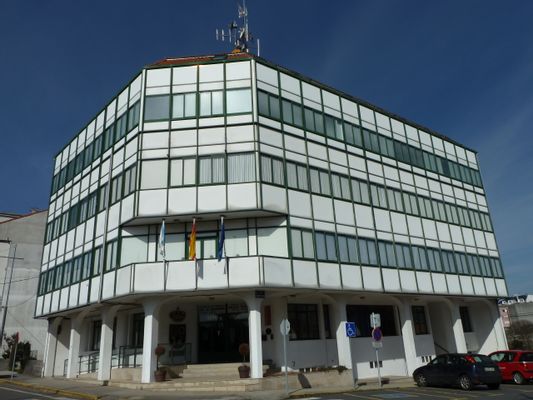This coastal city in northwestern Spain has a charming old town, stunning beaches, and a neo-Gothic cathedral. Visitors can enjoy fresh seafood and explore the Museum of Archaeology.
A Coruña extends into the Atlantic Ocean on a peninsula in northwestern Spain. This port city has over 2000 years of history, visible in landmarks like the Roman-built Torre de Hércules lighthouse and the medieval streets of the Old Town. A Coruña is known for its urban beaches, fresh seafood, and distinctive glass-enclosed balconies that have earned it the nickname "City of Glass." Visitors can explore museums, relax on sandy shores, and enjoy panoramic views from hilltop parks.
Torre de Hércules: Ancient Roman Lighthouse
The Torre de Hércules is the symbol of A Coruña and the oldest working lighthouse in the world. Built in the 2nd century AD, it still guides ships along the Galician coast. You can climb 234 steps to reach the top and see the city and coastline spread out below. A sculpture park surrounds the tower, illustrating the mythical story of its creation.
Wandering the Old Town
Narrow medieval streets make up A Coruña's Old Town, leading to Plaza de María Pita. This main square has the city's town hall on one side and outdoor cafes on the others. Near the plaza, you'll find the Church of Santiago, A Coruña's oldest church built in the 12th century in the Romanesque style.
Urban Beaches
A Coruña has two beaches right next to the city center. Playa del Orzán and Playa de Riazor form a long stretch of sand popular with both locals and visitors. In summer, people come here to sunbathe and surf. A promenade runs behind the beaches, used by walkers and cyclists throughout the year.
Galician Seafood and Local Cuisine
A Coruña's coastal location means you can eat lots of fresh seafood. Try local dishes like pulpo á feira (octopus with olive oil and paprika) and percebes (goose barnacles). Visit the Mercado de San Agustín to taste Galician cheeses, wines, and other regional products.
Glass-Enclosed Balconies
As you walk around A Coruña, look up to see the glass-enclosed balconies called galerías on many buildings. These act like greenhouses, keeping homes warm in the cool, damp climate. The most impressive examples line the Avenida de la Marina, creating a reflective glass facade along the harbor.
Art and Science Museums
The Fine Arts Museum contains Galician and Spanish art from the 16th to 20th centuries. For a more hands-on experience, visit the House of Sciences in Santa Margarita Park. This science museum has a planetarium and interactive exhibits about nature and technology.
Paseo Marítimo: Coastal Promenade
The 13-kilometer Paseo Marítimo circles most of A Coruña's peninsula. This seaside walkway passes beaches, parks, and major sights including the Torre de Hércules. You can rent a bike to travel the full length, or walk sections to enjoy the ocean views.
Monte de San Pedro Park
For a different perspective on A Coruña, go to Monte de San Pedro park. A glass elevator takes you up the hill to this former military fort. From the top, you can see the whole city and the Atlantic Ocean. The park has walking paths, old bunkers to explore, and a restaurant with large windows facing the sea.
Day Trips from A Coruña
A Coruña's location lets you explore more of Galicia. The pilgrimage city of Santiago de Compostela is an hour away by train. You can also visit the Costa da Morte, known for its dramatic cliffs and beaches. This coastal area has small fishing villages and historic lighthouses to discover.
Transportation in A Coruña
A Coruña's airport connects to major Spanish cities and some European destinations. Trains link A Coruña with Madrid and other parts of Spain. In the city, you can walk to many sites. Buses run throughout A Coruña, and you can rent bikes for longer trips.

















